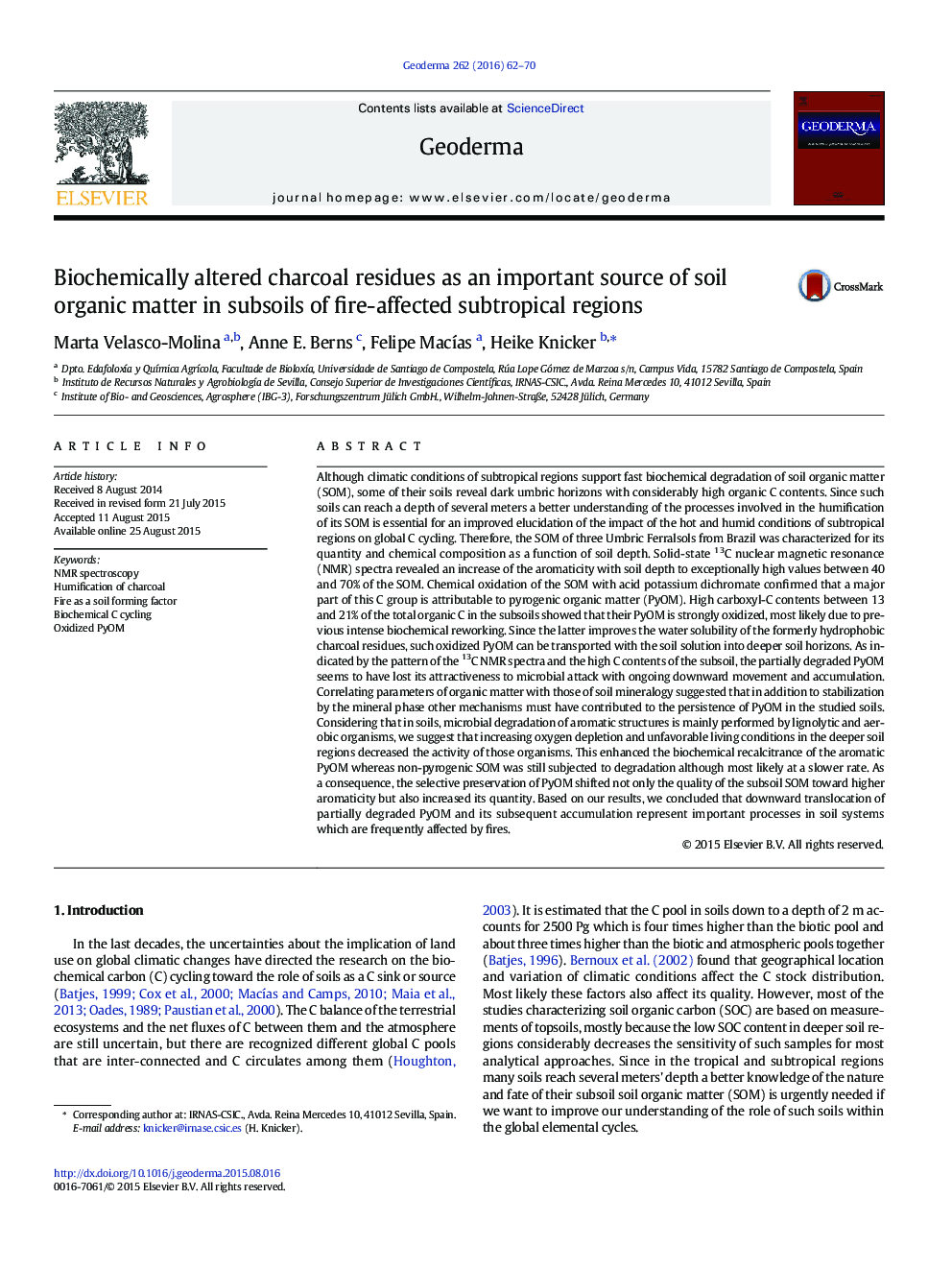| کد مقاله | کد نشریه | سال انتشار | مقاله انگلیسی | نسخه تمام متن |
|---|---|---|---|---|
| 4573049 | 1629454 | 2016 | 9 صفحه PDF | دانلود رایگان |
• Carboxylated PyOM dominates SOM in subsoils of fire-affected Ferralsols.
• Partial microbial degradation of PyOM in the topsoil enables its vertical transport.
• Accumulation of PyOM in subsoils represents an important C sink.
• With depth, PyOM is stabilized by its increasing biochemical recalcitrance.
• Fire is suggested as an additional soil forming factor.
Although climatic conditions of subtropical regions support fast biochemical degradation of soil organic matter (SOM), some of their soils reveal dark umbric horizons with considerably high organic C contents. Since such soils can reach a depth of several meters a better understanding of the processes involved in the humification of its SOM is essential for an improved elucidation of the impact of the hot and humid conditions of subtropical regions on global C cycling. Therefore, the SOM of three Umbric Ferralsols from Brazil was characterized for its quantity and chemical composition as a function of soil depth. Solid-state 13C nuclear magnetic resonance (NMR) spectra revealed an increase of the aromaticity with soil depth to exceptionally high values between 40 and 70% of the SOM. Chemical oxidation of the SOM with acid potassium dichromate confirmed that a major part of this C group is attributable to pyrogenic organic matter (PyOM). High carboxyl-C contents between 13 and 21% of the total organic C in the subsoils showed that their PyOM is strongly oxidized, most likely due to previous intense biochemical reworking. Since the latter improves the water solubility of the formerly hydrophobic charcoal residues, such oxidized PyOM can be transported with the soil solution into deeper soil horizons. As indicated by the pattern of the 13C NMR spectra and the high C contents of the subsoil, the partially degraded PyOM seems to have lost its attractiveness to microbial attack with ongoing downward movement and accumulation. Correlating parameters of organic matter with those of soil mineralogy suggested that in addition to stabilization by the mineral phase other mechanisms must have contributed to the persistence of PyOM in the studied soils. Considering that in soils, microbial degradation of aromatic structures is mainly performed by lignolytic and aerobic organisms, we suggest that increasing oxygen depletion and unfavorable living conditions in the deeper soil regions decreased the activity of those organisms. This enhanced the biochemical recalcitrance of the aromatic PyOM whereas non-pyrogenic SOM was still subjected to degradation although most likely at a slower rate. As a consequence, the selective preservation of PyOM shifted not only the quality of the subsoil SOM toward higher aromaticity but also increased its quantity. Based on our results, we concluded that downward translocation of partially degraded PyOM and its subsequent accumulation represent important processes in soil systems which are frequently affected by fires.
Journal: Geoderma - Volume 262, 15 January 2016, Pages 62–70
